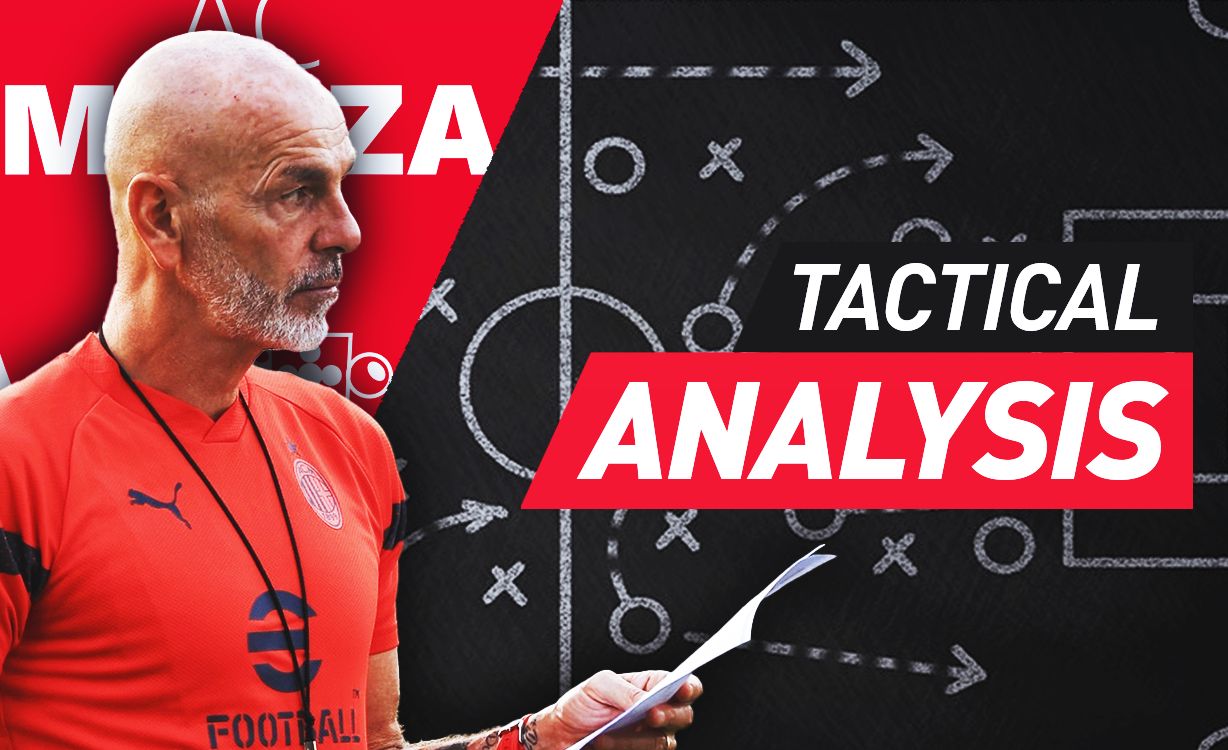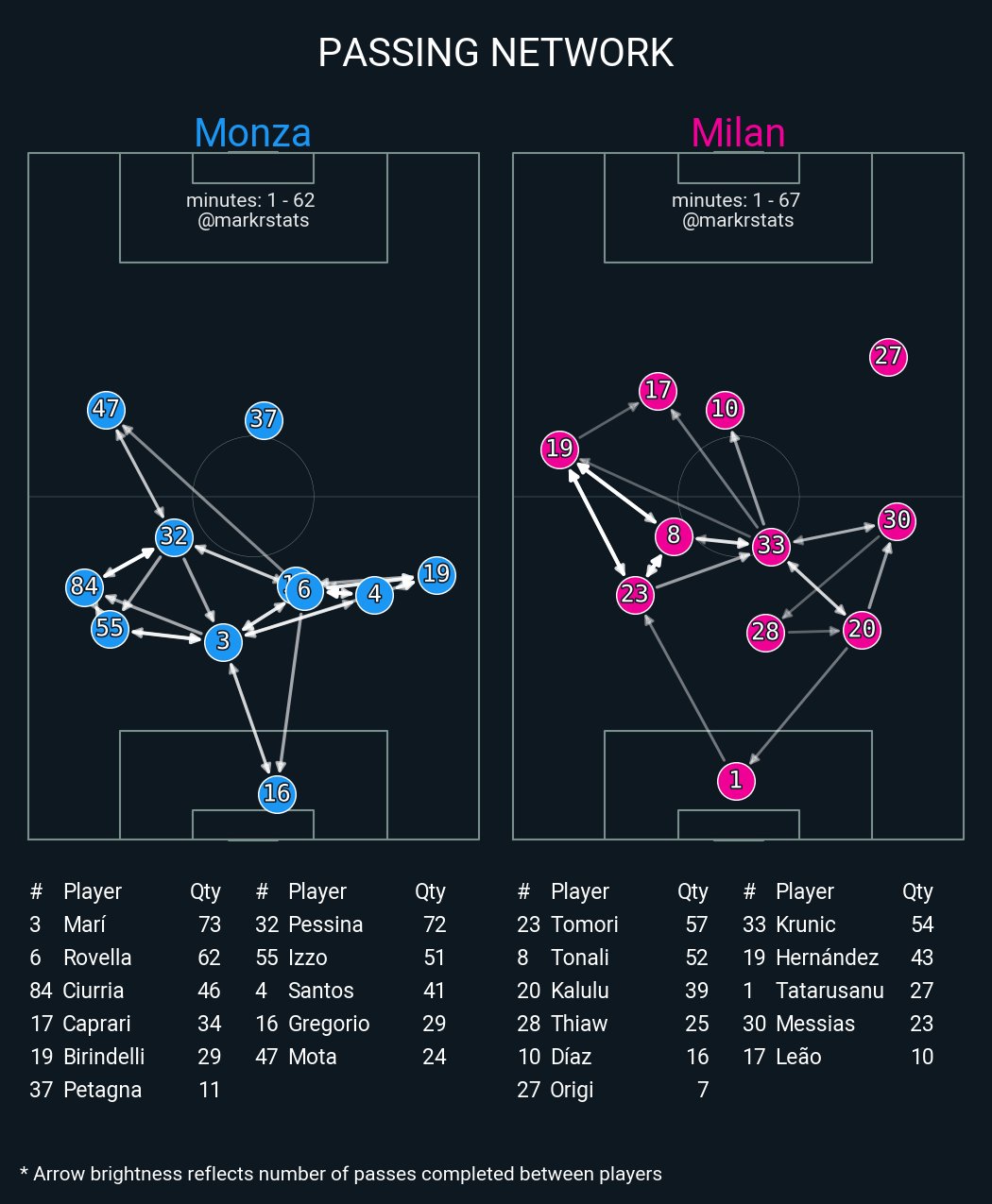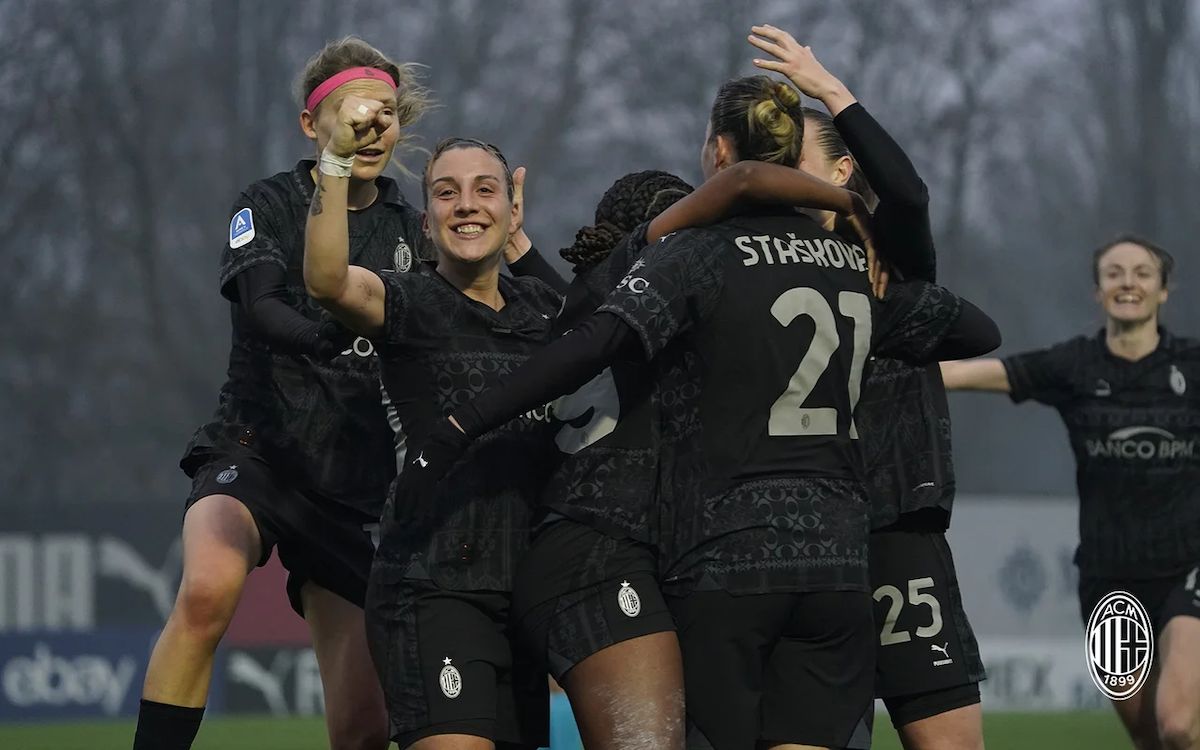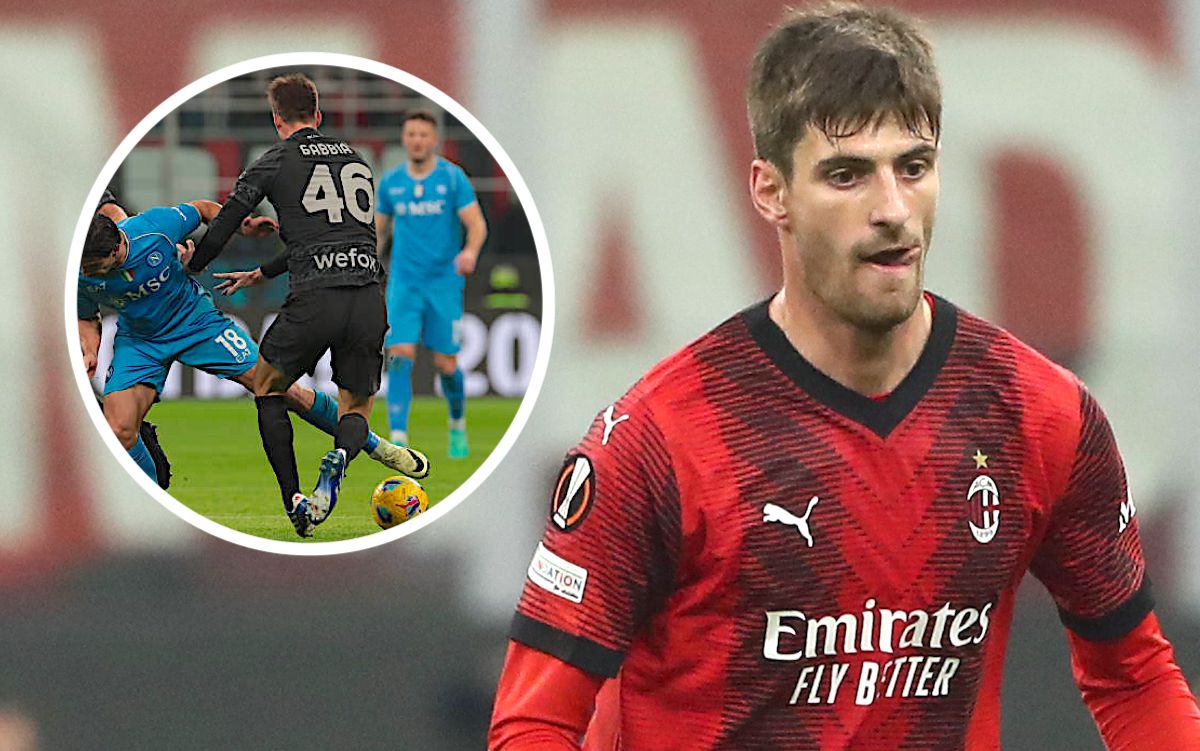It seems that one goal is all it takes for AC Milan at the moment as they won their third consecutive game by a scoreline of 1-0 on Saturday, this time against fellow Lombardy side Monza.
A well-taken strike from Junior Messias on the edge of the box just past the half-hour mark was enough to bring the three points home, while Milan rode their luck at times by missing crucial chances to pad the advantage and also seeing the home side come close too, including a late ricochet that hit Ciprian Tatarusanu and the post twice.
Below are some tactical points from a third straight win in a row…
Detaching from duty
Fikayo Tomori returned to the starting line-up having missed the last few games with a hip issue, and his position was quite interesting to follow throughout as he did not remain glued alongside Malick Thiaw and Pierre Kalulu in the three-man defence, far from it in fact.
Tomori is circled in white before and it shows how the Englishman was willing to step out of the line to lend support both in aerial duels from Monza’s attacks but also when Milan were in their build-up phase.
The problem in the sequence below though is that it almost causes Milan to be caught in transition, something they have been determined to try and stop since switching to using three centre-backs.
Junior Messias has had to tuck in from wing-back to re-establish the three, something that Ciurria spots he may be able to take advantage of, especially given that the double pivot (shown by the two arrows) are disjointed and unable to stop the ball being quickly switched.

Via a deflected the ball does make its way through, but Kalulu and Messias are caught flat-footed having been focusing on stopping the centre-forward Petagna. In the end, a save thwarts a dangerous chance after Ciurria got the ball in the space on the left side of the box.
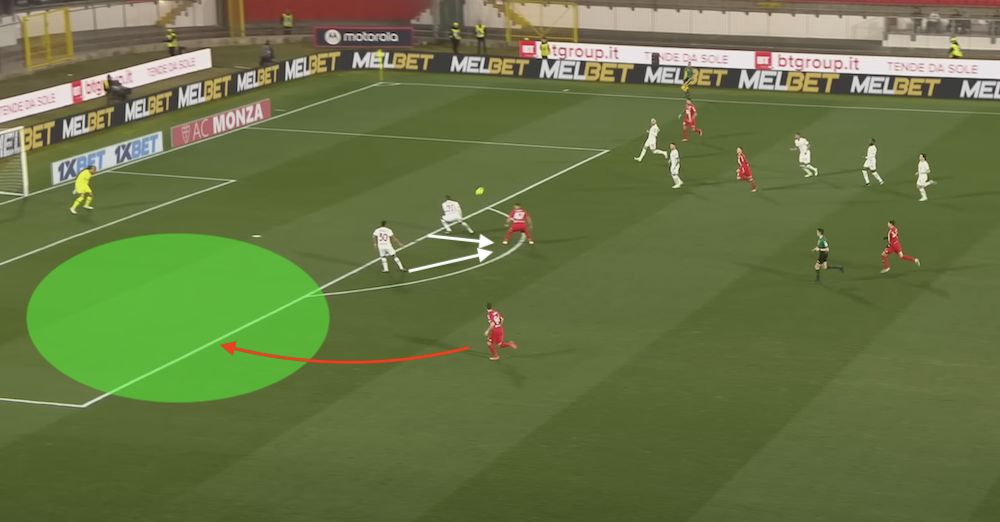
At the other end though, the unpredictability of having Tomori able to come out of the defensive line almost paid dividends in a quite remarkable way.
The team are lined up in a fairly orthodox way in Monza’s half while trying to build an attack with Theo Hernandez in possession, but Tomori of all people is the furthest forward and the home side simply do not pick him up as he makes a run into the box.
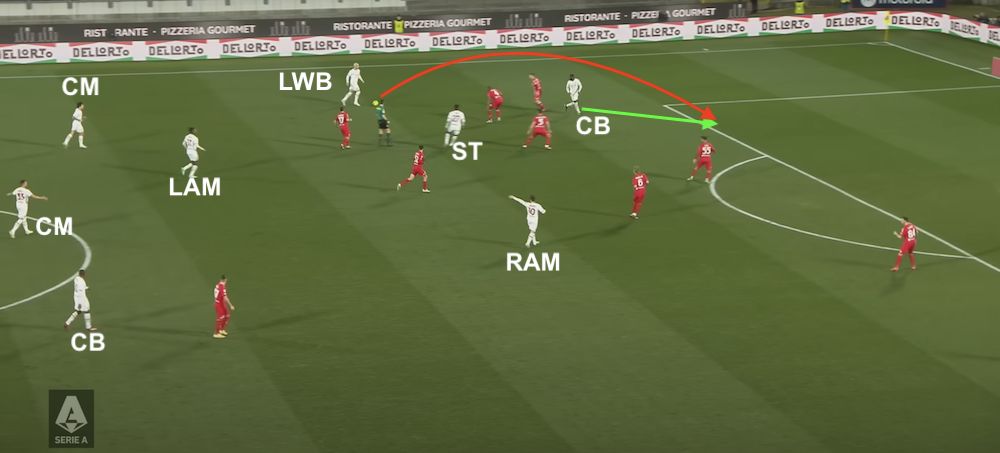
He is found by Theo, eventually seeing his half-volley saved by Di Gregorio.
Finding a happy medium
Last week we heavily praised Milan for how they dealt with the set pieces that Spurs tried to create danger with in the Champions League last 16 first leg. It was a huge part of what contributed to the clean sheet, given Antonio Conte’s side lead the Premier League for set piece goals.
However, things could have very quickly been undone against Monza in what would have been a very disappointing way in the first half.
As they did versus Spurs, Milan lined up man-on-man with Monza’s must dangerous aerial threats around the penalty spot (the green circles), while they had a line of five across the edge of the six-yard area, therefore a mix between zone and man-marking which allowed for extra cover due to numerical superiority.
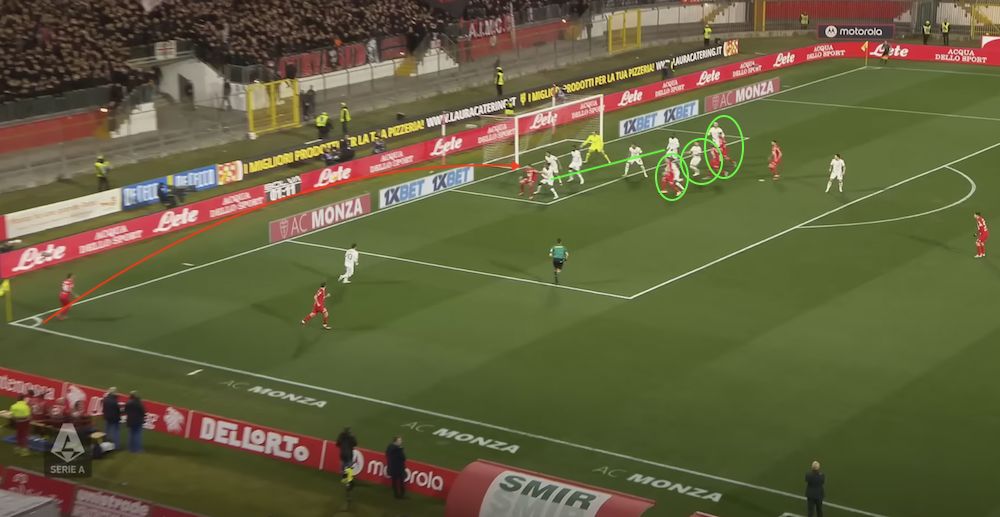
As the ball comes in, there is a quite obvious flaw to the set-up that had been drawn up on the training ground. Petagna is the man stood at the near post – a real physical unit who has good heading ability – and nobody gets close to getting in front of him.
It suggests that Milan did not have time to react to the fact Monza sent their best header of the ball to the near post where Rafael Leao was then required to try and contest the ball.
Having more organisation on set pieces was important to try and reverse the negative trend defending them, but too much rigidity can cause obvious plans to be easily exploited. The solution? One of the spare men in the line of five should have detached to cover.
Building attacks with the three
Milan’s defence in open play seems to be much more stable under the new system, however there is now plenty of scrutiny aimed at the attacking play (or lack thereof) that Stefano Pioli’s men are demonstrating, given the three goals scored in the last four games.
Below we see a team that has been playing three at the back for longer and how they attempt to set up. The three centre-backs are very narrow with Leao in possession (LAM), making sure Divock Origi’s movements are accounted for.
Then there is an almost perfectly straight line of five in midfield just a handful of yards in front of the defence, an instruction that has frustrated Brahim Diaz in previous games and did so again.
Milan are still working things out in the attacking phase and cannot always rely on positional unpredictability like Tomori running in behind. As seen below, the wing-backs pushed right up to create the width down the side and try and draw that line of five wider.
Rade Krunic pushes up to the same level as Brahim, hoping to pounce between the lines if Monza are drawn out, while Tonali remains in a position to be the playmaker and able to switch flanks if necessary.

The problem that Milan continue to have is getting quality service into the centre-forward. Simply put, from positions like above they are not moving the ball quickly enough or with enough quality, nor are the movements made after the pass to really cause Monza issues.
It is all quite predictable, especially with Origi often double or triple teamed taking away the potential for a well-placed cross to cause carnage.
What mid-block?
We also highlighted after the Spurs game that Milan were playing a mid-block, an approach you can read more about here.
Essentially, it involves playing the defensive line in the middle third of the pitch but having the midfield close ahead too. The distance between the back four and the front two must be minimum while the distance between the players must be least to avoid giving any space to the opposition.
However, in the Monza game, there were times when Milan couldn’t have looked more the opposite. Instead, we saw a return to the old style that the Rossoneri had which was pressing in pairs, sometimes in a quite frantic way.
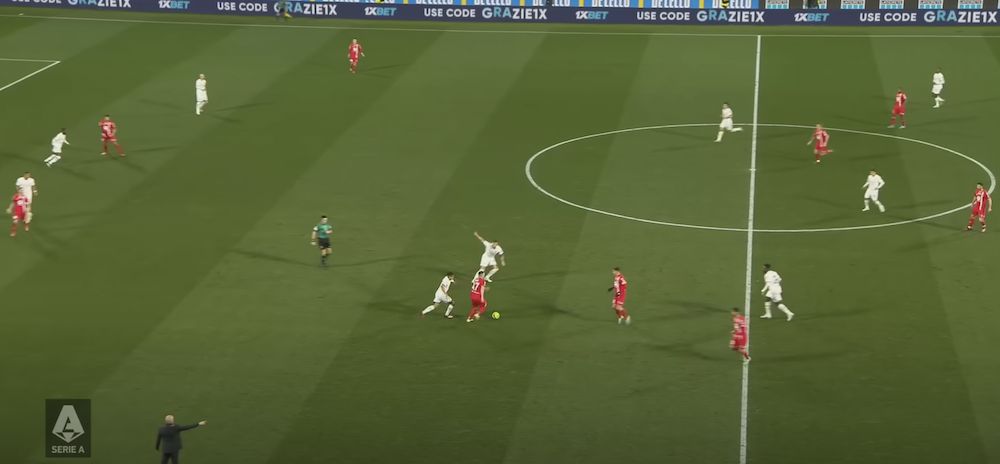
There are acres of space between the defensive line and the midfield pairing when Messias and Krunic engage in the frame above (Tonali is almost on the halfway line), but rather than everyone dropping deep or the defence pushing up, the press kicks in to win possession back and spark a three-on-two on the counter.

Contain and counter
Theo Hernandez has looked back to his best in terms of the possession phase in the last couple of games, and showed how much of a weapon he can be for Milan with this new approach.
The left-back is first to react as a ball is cleared from Milan’s box and he nods it forward to Brahim Diaz who has dropped into a position near the halfway line (notice Tomori in the bottom left, again nowhere near the danger area).
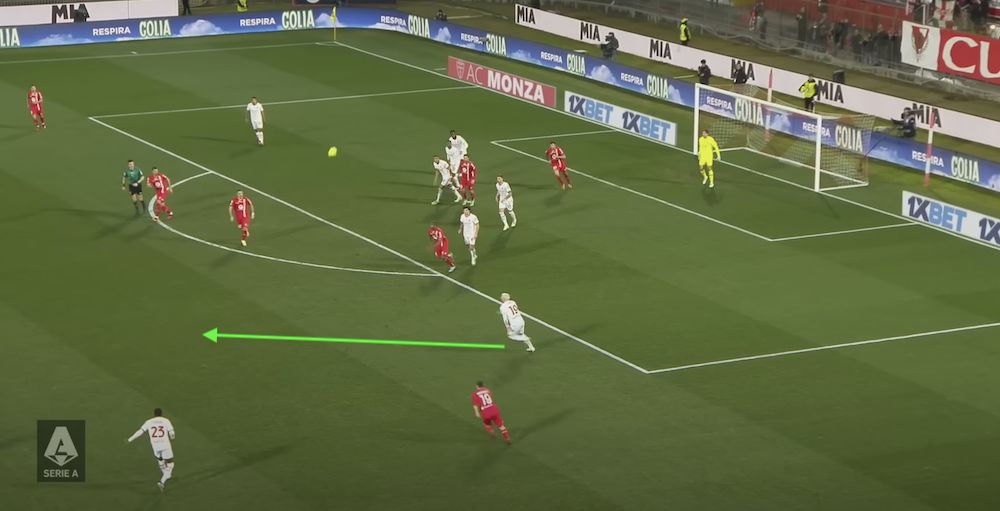
As Brahim picks up possession, Theo carries on sprinting down the middle and the path opens up perfectly thanks to Leao’s run off to the right and Tomori’s to the left.

Brahim finds Leao, Leao pokes it in behind and ultimately Theo should have buried his chance, instead hitting the side netting.

That move from start to finish was three passes in six seconds, as well as being a reminder that Milan can play the contain and counter game very well as long as those chances are taken, even if Arrigo Sacchi disapproves.
The data
We thank MarkStatsBot for the numbers, which show that Milan were not as ‘lucky’ as some have made out given they had an xG (Expected Goals) of 2.26 to Monza’s 0.48, however the Expected Threat was only 0.94 to the home side’s 1.14.
Both the possession (58.6% to 41.4%) and the field tilt (58.2% to 41.8%) went in Monza’s favour, showing Milan have some work to do in controlling the ball and thus the tempo. In addition, the Rossoneri had less 10+ pass sequences (13 to 12).
The passing network reveals some interesting trends. What stands out firstly is the isolation of Origi, who completed one pass in his 63 minutes on the field and was starved of service, just like his opposite number Petagna.
Secondly, Tomori, Tonali, Kalulu and Thiaw were the most involved in the opening 67 minutes – the four deepest outfield players on the pitch generally – something that does not lend itself to establishing territorial superiority high up the field.
Conclusion
It wasn’t pretty, it wasn’t vintage but perhaps it was never going to be against a well-coached team under Palladino who had not lost a game in 2023 until Saturday and had given the top sides some real issues.
However, there is still an obvious balance to be found in the approach from Pioli’s side, as they again largely waited for the opponent to play their game to sting them at the other end on the counter, an approach that might be wise against Spurs but doesn’t look particularly befitting of a top side against lower teams.
The attacking play is still not close to the best it has been under Pioli, and while there is this conservative approach then it all feels a tad hollow. Charles De Ketelaere’s duck remains unbroken, Rafael Leao has also gone a while without scoring and the goals are having to come from other sources – Pioli must now focus on getting things flowing.

